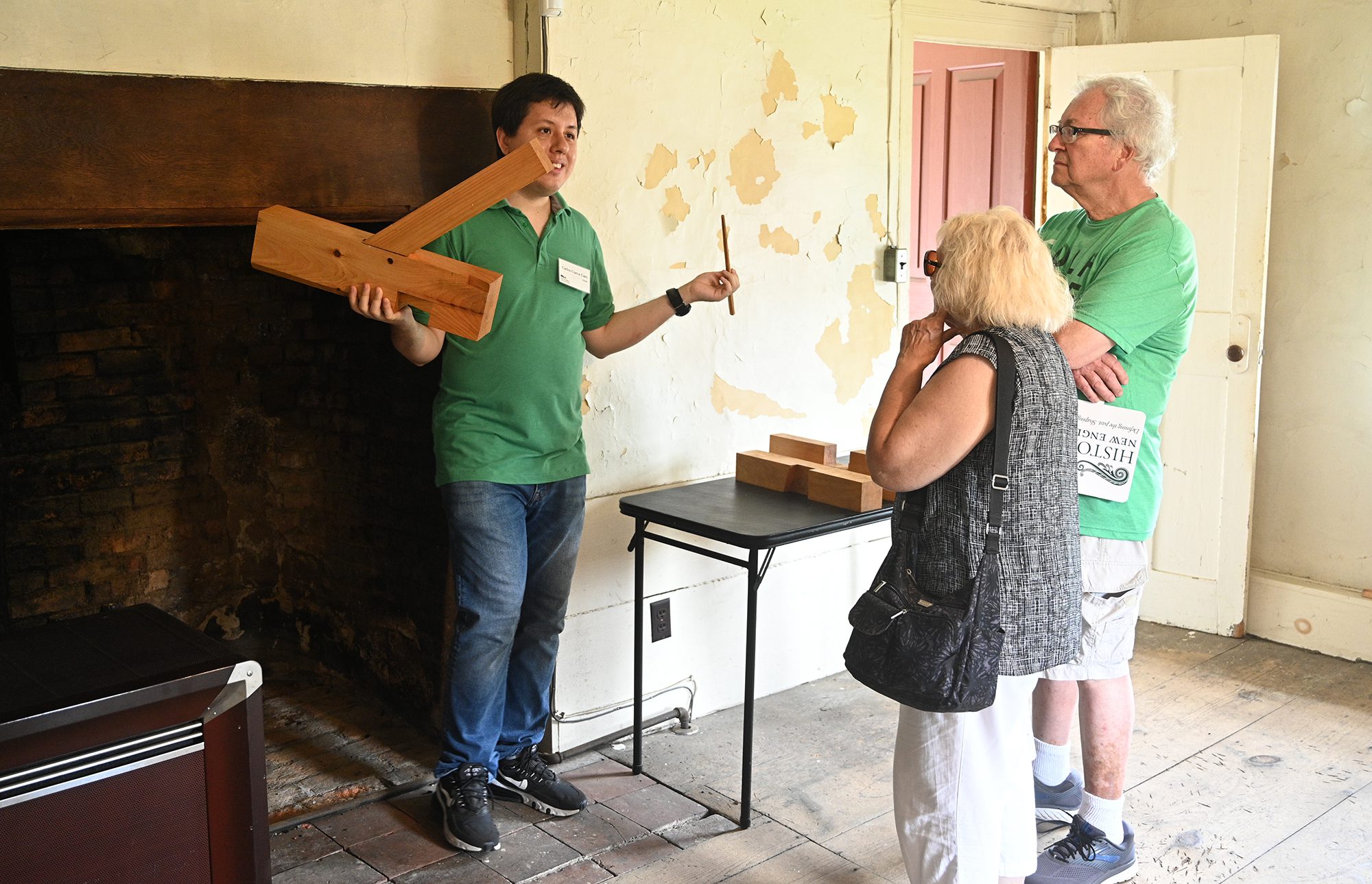SAUGUS — Historic New England held its first-ever “Community Day” Sunday afternoon, highlighted by a pair of tours of the Boardman House, the Howard Street home constructed in 1692.
The organization, which oversees the property along with 21 other historic sites across the state, held the event in an effort to raise its profile in town and show off the house, which remains in a near-original state despite being centuries old, North Shore Regional Site Administrator Abby Stewart said.
Saugus Iron Works and Saugus Historical Society, as the two other major historical institutions in town, had a presence at Community Day via a set of tables set up outside the home, where passersby could learn about the history of the house or the Iron Works itself.
The house is open to the public twice a month from May to October on the second Saturday and third Thursday of each month. Entry is free to Saugus residents and Historic New England members.
During the tour, which drew a small crowd of about a dozen on a sweltering day, Jim Bennett took the group through each of the home’s rooms, including cramped spaces like the cellar and the attic. Bennett explained that the house was built in two stages after William Boardman, a furniture maker, bought the land — then 300 acres — in 1686.
The front of the home was built in 1692, with an addition tacked on to the back four years later that made the house fit into the traditional “saltbox” structure prevalent throughout New England. Remnants of that expansion work are still visible inside the home, as wooden boards that used to comprise the original roof can be seen in the attic — with several ears of corn situated between the two roofs for reasons unknown.
But, testing has revealed that most of the construction done on the back half of the home dates back to 1729, not 1696. Bennett explained that possibly due to a fire or collapse, the second half of the home was rebuilt on its original footprint.
“What happened? It’s the great mystery of this house,” said the longtime tour guide.
At the time, the property stretched from Howard Street to the town’s borders with Wakefield and Melrose, and a stud still located on the lawn marks the former border of Suffolk and Essex counties — with the home technically constructed in Boston because of a geographical anomaly.
Bennett explained that the home passed through the family for generations after Boardman’s death, likely of smallpox, before eventually falling into the care of Historic New England in 1914. A push to make restorative changes to the property never materialized, and thus, the Boardman House sits in “almost pristine condition,” Bennett said.
“Nowadays we have a very conservative preservation philosophy which is this: If it’s in the house, that means it’s part of the story of the house, so we don’t remove it,” Bennett said.
Inside the home, a chimney stack serves as the central feature of the two largest rooms on the first floor, and tour-takers were encouraged to duck into the stack and look up at centuries of ash build-up, and even a glimmer of daylight.
“The entire structure of this house really relies on that chimney stack,” Bennett said.
Other rooms featured original brickwork, masonry perhaps done by Boardman, and an original 17th-century hinge. Bennett took care to point out each detail, no matter how minor.
Chair of the town’s Tree Committee Nancy Prag said despite being a lifelong resident of Saugus, she had never been inside the Boardman House, but had always harbored a curiosity about what was inside the imposing wooden structure.
After completing the tour, Prag said she was impressed by the preservation efforts.
“I like that it’s not furnished,” she said. “I just love all the woodwork.”

